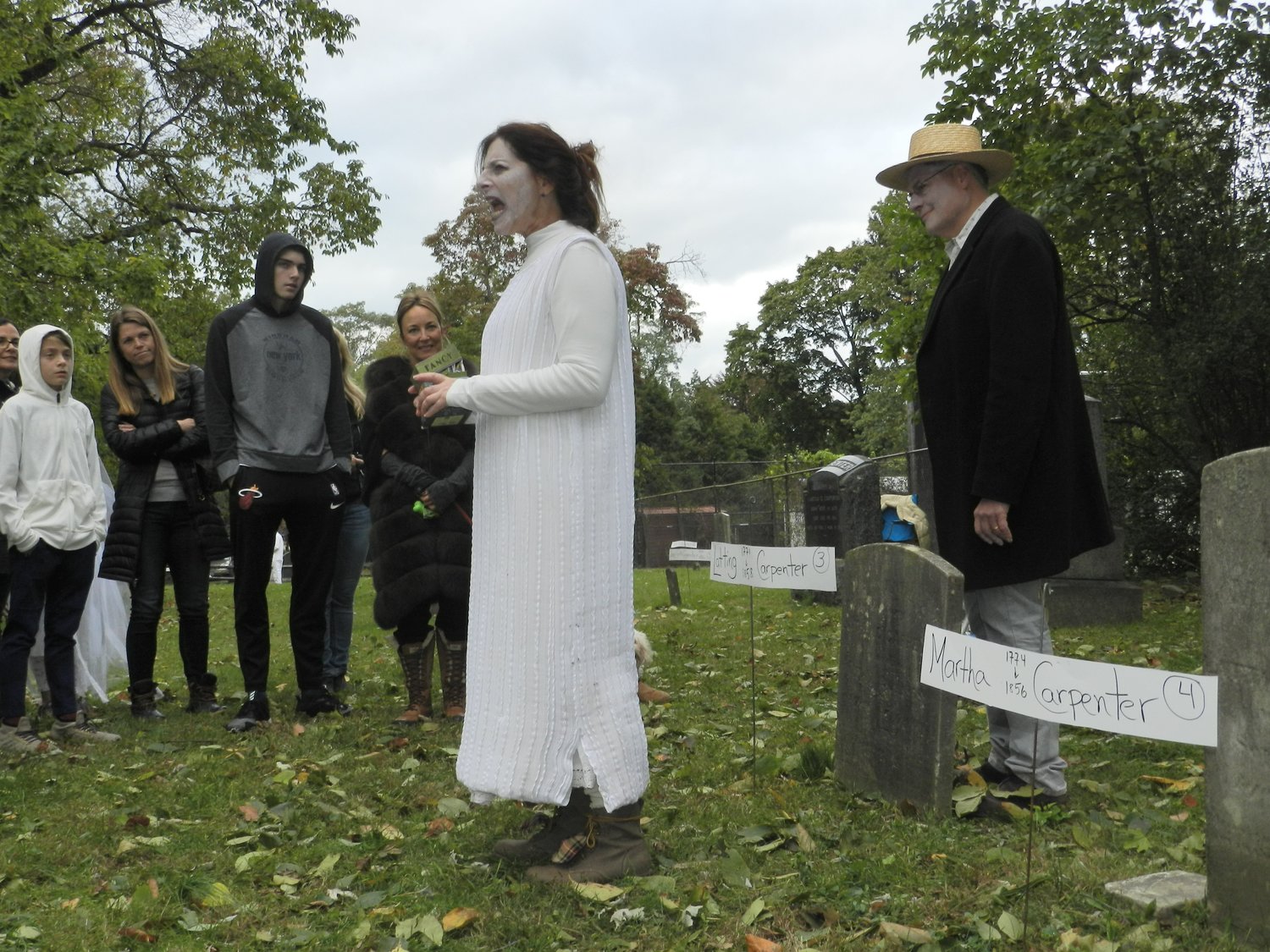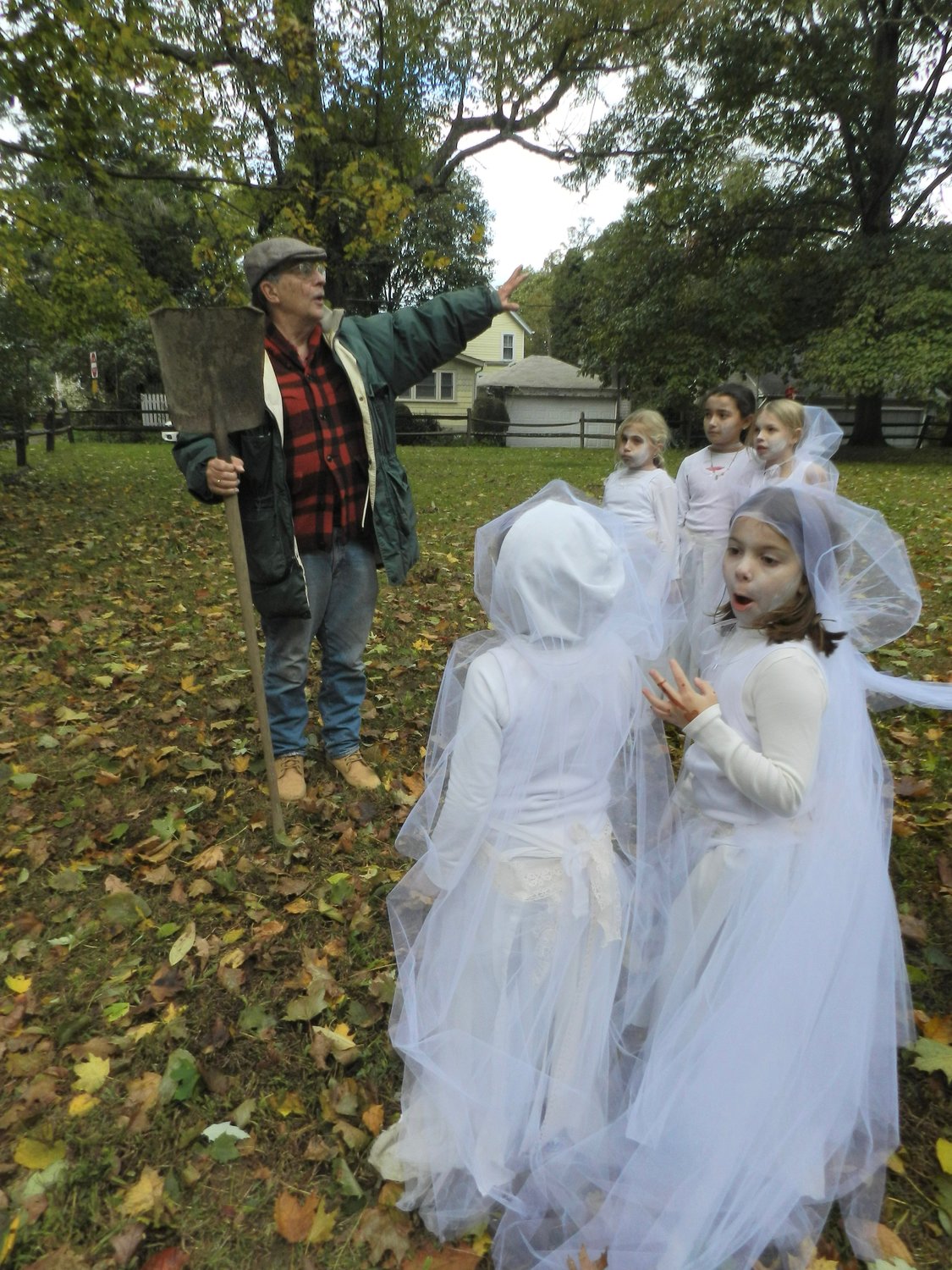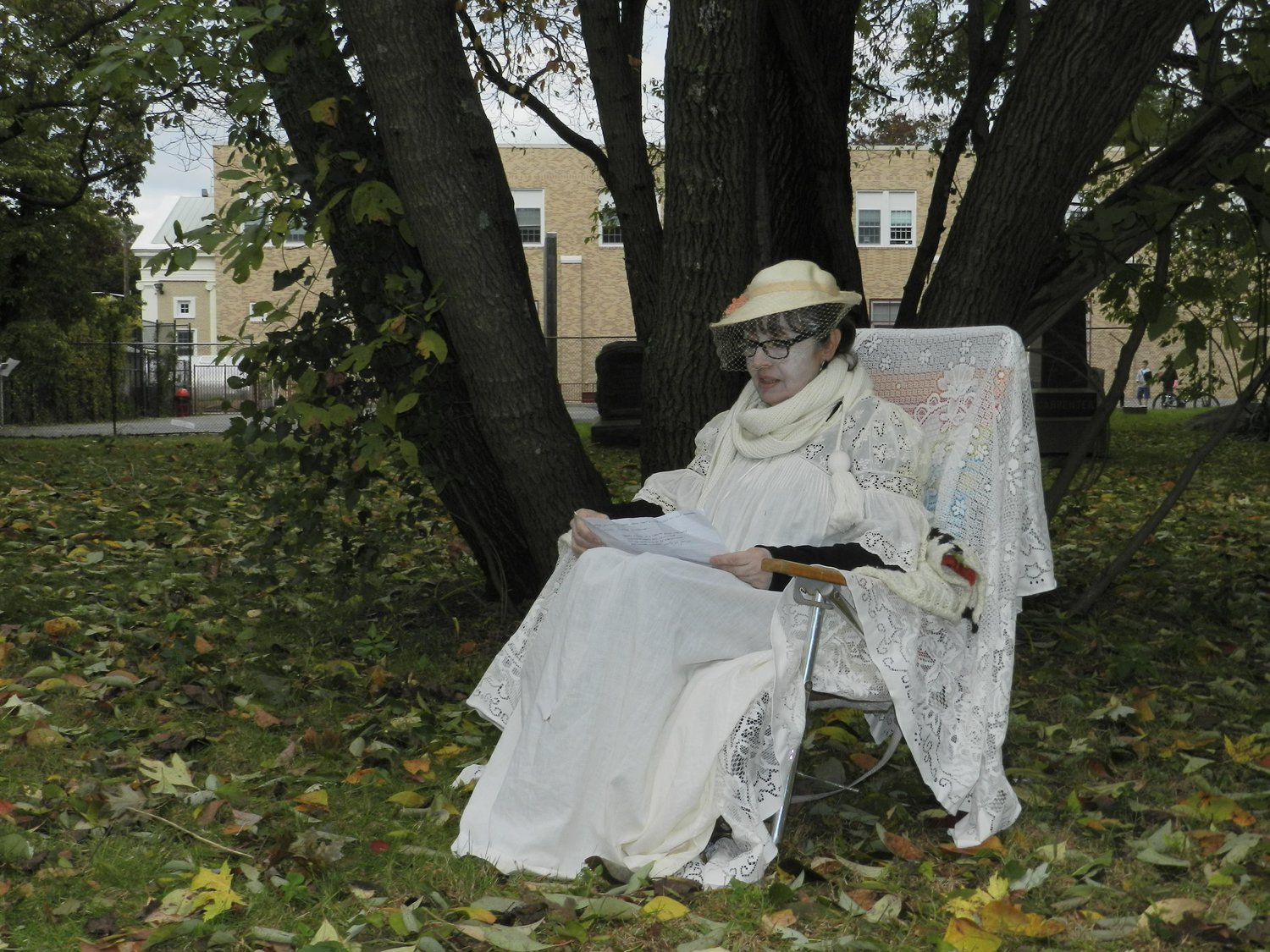Wednesday, April 17, 2024
 50.0°,
Overcast
50.0°,
Overcast
Sea Cliff’s Carpenter family is (briefly) raised from the dead
In Sea Cliff’s Carpenter Cemetery, a group of elementary school girls darted in and out of the half-barren trees, the wispy veils of their costumes trailing behind them in the autumn breeze. One child even carried a book of ghost stories as she circled the headstones. They call themselves the “Spirit Squad.”
On Sunday, the Good of the Village Association resurrected its Spooky Graveyard Tour, a Sea Cliff tradition that began in 2011, in which residents are invited to walk through the cemetery to learn about members of the Carpenter family, which dates back to the 1600s.
Peggy Costello, a GVA past president, came up with the idea. “This graveyard has been destroyed by kids over the years,” she said. “Every Halloween, it was the place to gather, and I saw people using it as a dog run, so I thought [people] would be more respectful if they knew who was buried here.”
Costello began her search at Glen Cove Library’s archives. There she discovered “great characters” who had lived in the village, and decided to devise a tour in the cemetery that would introduce residents to one of Sea Cliff’s founding families.
Along the tour, residents meet ghosts from the past — Revolutionary and Civil War heroes, a small pox victim, a naturalist and the entrepreneur who turned his farm into what is now Sea Cliff — played by volunteers from the GVA and the Sea Cliff Shakespeare Company.
“Even though [these] people are dead, their memories live on,” Alex Terentiev, of Sea Cliff, said. “It gives a presence to the village, and it makes people aware that there is a history.”
Although the event hadn’t been held in several years, it returned with the same ghoulish gravitas that had haunted residents in years past. The actors applied white face makeup and wore tattered period clothing to give themselves a ghostly appearance. They then took their places at various headstones, where they read “written pitches” about the people they were portraying.
Among the predecessors portrayed was Joseph Carpenter, who owned the land that eventually became Sea Cliff and a part of Glen Cove. In the 1600s, the King of England awarded ownership of the local waterways to the Town of Oyster Bay, Village Administrator Bruce Kennedy said. Glen Cove Creek was deeded to Carpenter because he had built a sawmill and a gristmill there.
“If he couldn’t have control, he was just going to abandon them,” Kennedy said, “and then the building of this area would’ve ceased.”
One of Joseph’s relatives, James Carpenter, played a critical role in making Sea Cliff a commercial trading village. While living in the community, he discovered significant clay deposits in the area. He used the clay to make bricks and eventually opened a factory. To trade with surrounding merchants, Costello said, Carpenter cut down trees to make schooners to ship bricks, timber and produce from local farms to Manhattan and Brooklyn.
“That started commerce, and then Sea Cliff started to bloom,” Costello added.
The event was free, but attendees were encouraged to make donations, which will be distributed among “assorted good causes within the village,” Kennedy said.
It would also benefit visitors to understand that the cemetery, which is on private property, is a historic site.
“It would be nice if the funds could be used to restore this historic cemetery,” Kennedy said, adding that the village could commission a sign so people would be able “to recognize what this place is and respect it as such.”
The hallowed souls that reportedly roam the graveyard would probably say the same.
HELP SUPPORT LOCAL JOURNALISM
The worldwide pandemic has threatened many of the businesses you rely on every day, but don’t let it take away your source for local news. Now more than ever, we need your help to ensure nothing but the best in hyperlocal community journalism comes straight to you. Consider supporting the Herald with a small donation. It can be a one-time, or a monthly contribution, to help ensure we’re here through this crisis. To donate or for more information, click here.
Sponsored content
Other items that may interest you









